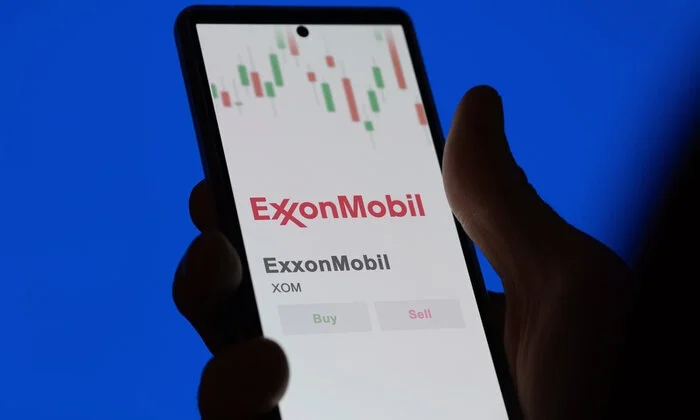Oil's Moment of Truth: Decoding the Contradiction in Exxon and Chevron's Q3 Forecasts
Tomorrow morning, before the opening bell rings and the market’s frantic pulse begins to race, two titans of the global economy will pull back the curtain on their Q3 2025 performance. ExxonMobil and Chevron, the American supermajors, are reporting. And if the consensus forecasts are any indication, the numbers won’t be pretty. The entire sector has been navigating a difficult environment, with crude prices stubbornly trending under $70 a barrel for much of the quarter. This isn't a temporary dip; it's a new reality shaped by OPEC+ systematically reversing its production cuts, steadily increasing global supply.
Yet, a curious disconnect is emerging from the data. The headline numbers—revenue and earnings per share (EPS)—are pointing south. At the same time, the Wall Street analyst community is holding a line of cautious optimism, stamping both companies with a "Moderate Buy" consensus rating. This presents a contradiction that any serious analyst has to unpack. Are the forward-looking expectations for Big Oil completely detached from the current, quantifiable reality? Or are the analysts seeing a signal through the noise that the raw numbers are missing?
I've looked at hundreds of these pre-earnings filings, and this particular setup, with such a stark divergence between fundamentals and sentiment, is unusual. It demands a closer look.
The Bleeding Numbers
Let's start with the objective data, because opinions are cheap but numbers have a cost. For both Exxon and Chevron, Wall Street is bracing for a year-over-year decline. The pain, however, is not distributed equally.
For ExxonMobil (XOM), the projections are for a marginal revenue shrink of 0.72%, bringing the total to $86.47 billion. That’s a rounding error for a company this size. The more telling figure is the earnings per share, which is expected to land at $1.82. That’s a drop of more than 5% from the $1.92 reported in the same quarter last year. It’s not catastrophic, but it’s a clear signal of margin compression in a lower-price environment.
Then there’s Chevron (CVX). The projections here are, to put it mildly, dire. Revenue is anticipated to shrink by about 3%—to be more exact, 2.96%—to $47.23 billion. But the EPS forecast is the real headline. Analysts expect it to plummet a staggering 32% to $1.71, a massive fall from the $2.51 per share it posted in the prior-year quarter. A 32% drop in earnings isn't a soft quarter; it's a five-alarm fire in the C-suite. This isn't just about weaker oil prices; a figure that severe hints at deeper operational headwinds, perhaps compounded by the recent fire at its Los Angeles refinery, an event whose full financial impact remains opaque.

These aren't just abstract percentages. This is the mathematical reflection of a market where supply is outpacing demand, squeezing the profitability out of every barrel pulled from the ground. The U.S. Energy Information Administration isn't helping morale, either, forecasting crude could fall below $60 by the end of this year and average near $50 for 2026. So, we have falling prices, rising supply, and earnings forecasts that range from disappointing to disastrous. Why, then, is Wall Street telling clients to buy?
The Analyst's Wager
This brings us to the core contradiction. Despite the grim short-term data, both XOM and CVX carry "Moderate Buy" ratings. For Exxon, that’s based on 12 Buys and 7 Holds. For Chevron, it’s 11 Buys and 5 Holds. There isn't a single "Sell" rating in the bunch. It's like staring at a weather map showing an approaching hurricane while the local government insists it's a fine day for a picnic. Something doesn't add up.
What could possibly justify this optimism? The price targets offer a clue. The average target for Exxon suggests a 9.56% upside from its current price, while Chevron (despite its catastrophic EPS forecast) is seen as having an even greater potential upside of 10.43%. This implies that analysts are looking past the immediate quarter, and perhaps the next several, to a different reality.
So, what are they betting on? It's certainly not the current price of oil. The most plausible explanation is that these ratings are a vote of confidence in the supermajors' ability to manage a downturn. The narrative is that these giants can weather the storm through aggressive cost-cutting (we've already seen reports of job cuts), disciplined capital expenditure, and shareholder-friendly actions like stock buybacks. The bet isn't on the commodity; it's on the corporation.
But this raises some fundamental questions. At what point does financial engineering fail to compensate for a deteriorating core business? How long can cost-saving measures prop up a stock when revenue and earnings are in structural decline? This feels less like an investment thesis and more like a legacy belief—the ingrained idea that Big Oil is always a safe haven, a blue-chip stalwart that can't fail. The ratings seem to be pricing in a rapid rebound in oil prices that the EIA's own data contradicts, or they are placing an immense, perhaps unwarranted, amount of faith in management's ability to defy market gravity.
A Bet Against the Tape
When the numbers and the narrative are in direct opposition, my instinct is to trust the numbers. The "Moderate Buy" ratings feel like a lagging indicator, a holdover from an era of higher energy prices and geopolitical instability that favored producers. The current data points toward a period of significant pain, and the idea that both stocks offer a nearly 10% upside from here requires a suspension of disbelief. It's a bet that the market will reward these companies for simply surviving, not for thriving. Tomorrow's earnings call won't just be about the Q3 numbers; it will be a test of whether the old, comfortable story about Big Oil can withstand the brutal mathematics of a new energy market.
